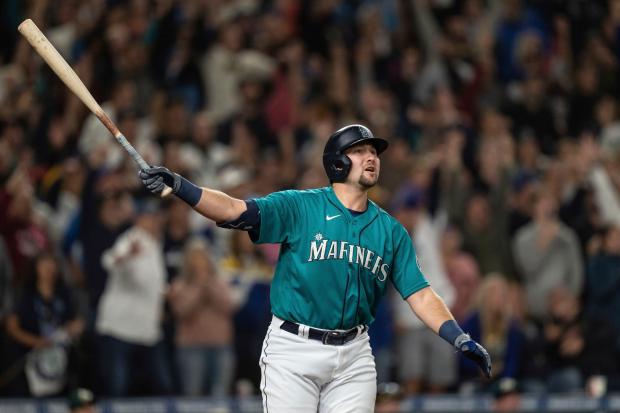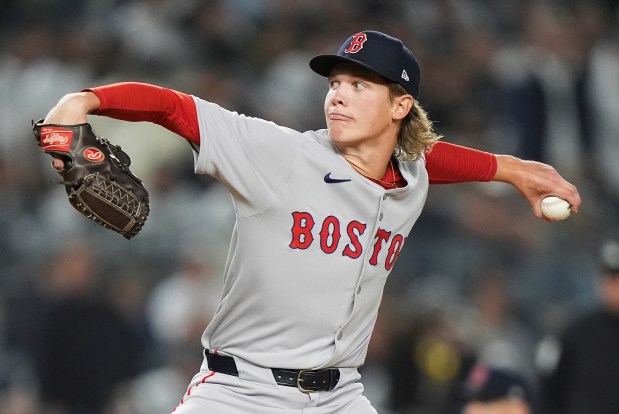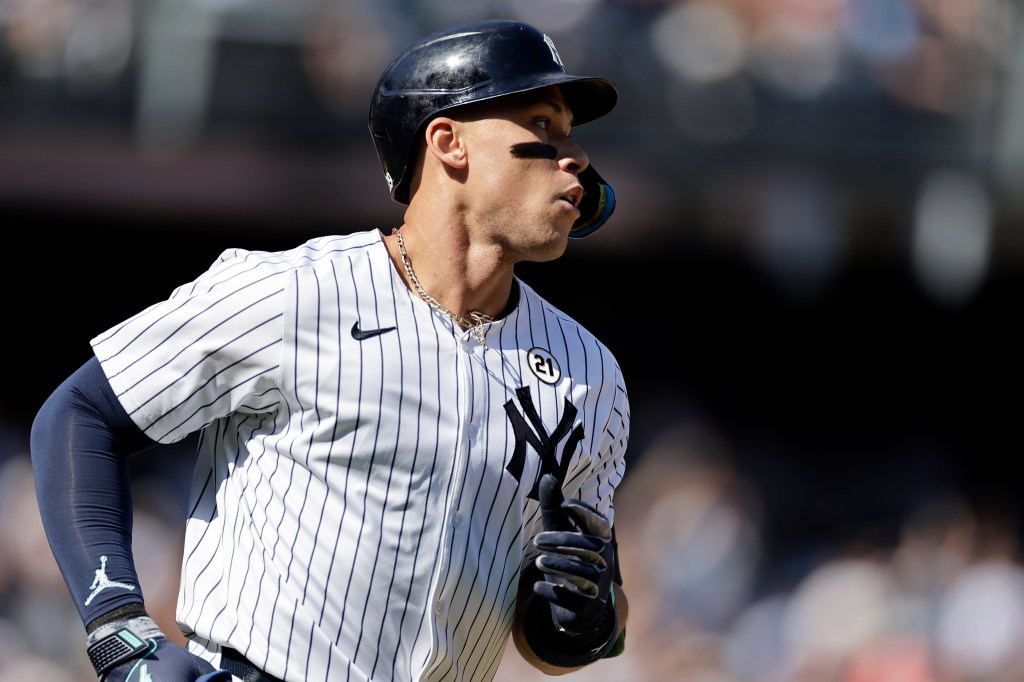Over the past few years many of baseball’s biggest awards have tended to go in a landslide. Each of Shohei Ohtani’s four MVPs were unanimous, as was Ronald Acuña Jr.’s NL MVP in 2023.
Paul Skenes was a unanimous pick for NL Cy Young this year, and Tarik Skubal won each of his back-to-back honors decisively, including a unanimous selection in 2024.
That made this year’s AL MVP race between Aaron Judge and Cal Raleigh particularly fascinating.
Judge and Raleigh each put together historic seasons, with Judge delivering arguably a top-five season all-time by a right-handed hitter while Raleigh enjoyed without question the greatest season ever by a catcher. Voters had a difficult choice to make, and it wasn’t clear who would win until Thursday’s announcement that Judge had prevailed in one of the narrowest MVP votes ever.
Did the voters make the right choice?
Full disclosure, I did not have a vote for MVP or any of the other BBWAA awards this year, so I didn’t do the kind of deep dive I would have if I were a voter, but my instinct is I would have picked Raleigh. Generally my philosophy with these kind of awards is that historic accomplishments deserve to be rewarded, and Raleigh hitting 60 home runs as a switch-hitting catcher combined with his standout defense behind the plate and his work leading one of the game’s best pitching staffs was uniquely dominant in a way that the best metrics can’t fully quantify.
 Seattle Mariners catcher Cal Raleigh finished as AL MVP runner-up despite hitting 60 home runs this past season. (AP Photo/Stephen Brashear)
Seattle Mariners catcher Cal Raleigh finished as AL MVP runner-up despite hitting 60 home runs this past season. (AP Photo/Stephen Brashear)
But 17 of my colleagues disagreed, arguing that Judge’s offensive performance was so outstanding that it was undeniable. After the vote I spoke to a number of people on both sides of the debate, and one supporter of Judge responded to my above point with a great question.
“Is it not historic to win a batting title while hitting 53 home runs?”
I hadn’t thought about it that way before, so I went and looked it up and it turns out this individual was right. Judge was the first player in MLB history to hit 53 or more home runs and win the batting title in the same season. Others pointed to Judge’s 215 OPS+, which translates to 115% better than average offensive production while adjusting for a player’s ballpark. That was the fourth highest in a single-season by a right-handed hitter in MLB history.
The only three better seasons were Judge last year, when he won MVP after batting .322 with 58 homers, 144 RBI and a 225 OPS+, Rogers Hornsby in 1924, when he batted .424 with a 222 OPS+, and Mark McGwire in 1998, when he hit a then-record 70 home runs with a 216 OPS+.
Raleigh, even with his 60 home runs, only had an OPS+ of 169. That means his production was 69% better than the average player, but Judge’s was 46% better than that.
Those arguments are obviously compelling, but Raleigh’s supporters countered by pointing out that Judge is supposed to be more productive offensively because catcher is a much more physically and mentally taxing position than right field.
Stats like Wins Above Replacement also don’t fully capture a catcher’s defensive contributions, and according to Statcast Raleigh graded as one of the best defensive players in MLB with an 87th percentile fielding run value.
How are we supposed to weigh all of that? That was ultimately for each voter to decide, and whether you agree with the outcome or not, debates like these are good for the sport and part of what makes baseball so special.
Affiliate’s quirky rebrand
You may have missed it watching late-afternoon college football, but last weekend some intriguing news broke in the world of Minor League Baseball.
The Red Sox’s Low-A affiliate was changing its name.
Formerly known as the Salem Red Sox, the Virginia-based affiliate will now be known as the Salem RidgeYaks. The distinctive new identity draws inspiration from the region’s Blue Ridge Mountains, and it furthers a trend we’ve seen where minor league clubs have increasingly adopted off-beat nicknames better equipped to sell merchandise.
Adventure Awaits as Salem RidgeYaks Introduce Outdoors-Themed Identity to Southwest Virginia
More Information: https://t.co/2POZIQhVFS pic.twitter.com/8OGf0hxJUz
— The Salem RidgeYaks (@RidgeYaks) November 8, 2025
Personally, I think the rebrand is a home run.
The old Salem Red Sox identity was as staid as it gets, and the club now has the freedom to get creative with its uniforms, hats and logo designs. The club also linked the word yak to both kayaking, a popular activity in the area, and the idea of hitting lots of “yaks,” or homers.
I’m especially fond of the new mascot, Mac the Yak, who the club describes as an avid hiker whose name is inspired by the iconic Appalachian Trail viewpoint McAfee Knob.
Sounds like a cool guy to me.
Does it matter that yaks aren’t native to the Appalachian Mountains? You won’t find too many Yard Goats wandering around Downtown Hartford either, but that hasn’t stopped fans in Connecticut from buying their merch in droves. It’s the same reason why minor league teams will occasionally adopt one-off alternate identities.
Not everyone will be interested in a New Hampshire Fisher Cats shirt, for example, but chances are more will wear something that says Manchester Chicken Tenders.
Yet while the rebrand is fun, quirky and ultimately rooted in business, it also has some significance beyond just boosting revenue.
The adoption of a new, Virginia-specific brand identity is a clear signal that the Red Sox’s Low-A affiliate will be remaining in Salem for the foreseeable future. That has seemed increasingly likely for a while now, but not long ago there were reasons to believe the club could potentially relocate to Lowell.
Here’s the backstory.
Five years ago when MLB restructured the minor leagues, it mandated that each club carry just four affiliates, one in Triple-A, Double-A, High-A and Low-A. The consolidation led to the elimination of Short-Season Single-A, which for the Red Sox meant the end of the Lowell Spinners.
The contraction of the Spinners and dozens of other clubs like them prompted a significant outcry from the affected communities, and for years afterwards state and local officials worked to try and bring a Red Sox affiliate back to Lowell. But because there could only be four affiliates per team, that meant somehow getting one of the club’s remaining affiliates to move.
The Triple-A Worcester Red Sox had just relocated from Pawtucket to Worcester and had a brand new ballpark, so they were out. The Double-A Portland Sea Dogs occupy one of the most desirable minor league markets in the country, and the High-A Greenville Drive are regarded as one of the minors’ model franchises. That left the Low-A Salem Red Sox as the only logical candidate.
A move would have made sense for a variety of reasons.
Unlike Greenville, which boasts one of the best minor league ballparks in the sport, Salem Memorial Ballpark needed a lot of work to adhere to MLB’s new facility requirements. LeLacheur Park in Lowell needed significant upgrades as well, but either way Salem’s owners would have to shell out money on their park.
The club’s ballpark lease was also due to expire after the 2024 season, and moving to New England would have brought the franchise closer to both the Red Sox fanbase and a sizable chunk of the organization’s developmental staff.
Meanwhile, in 2022, UMass Lowell purchased LeLacheur Park from the City of Lowell and announced plans to upgrade the park in hopes of attracting a new tenant. Those investments would have fallen far short of what would be needed to make the park affiliate-ready, but when Diamond Baseball Holdings purchased the Salem franchise in early 2023, suddenly there was a deep-pocketed ownership group with the resources capable of making a return to Lowell possible.
But that didn’t happen.
Diamond Baseball Holdings instead chose to invest money in Salem’s ballpark, and while a new lease agreement hasn’t been announced, a source knowledgable of the situation says the club and City of Salem are working towards a long-term deal.
Those talks have progressed to a point where the club felt comfortable moving forward with a rebrand, which would not have made sense if there was any possibility of relocation.
Lowell hasn’t sit still, either.
This past August local officials announced that starting next season LeLacheur Park will become home to a new Futures Collegiate Baseball League franchise. The Futures League, a New England-based college summer league, already hosts two other former New York-Penn League clubs — the Vermont Lake Monsters and Norwich Sea Unicorns.
While not an MLB affiliate, the new Futures League franchise will effectively close the loop on this five-year saga and bring summer baseball back to the Merrimack Valley.
And barring any unforeseen developments, fans can count on both the new Lowell club and the RidgeYaks to stick around for a long time.
 Connelly Early is one of six Red Sox prospects currently ranked inside Baseball America’s Top 100 list. (AP Photo/Frank Franklin II)
Connelly Early is one of six Red Sox prospects currently ranked inside Baseball America’s Top 100 list. (AP Photo/Frank Franklin II)
Sox system still bountiful
Over the past few years the Red Sox farm system has graded among the best in baseball thanks in large part due to the club’s collection of elite position player prospects. Entering 2025 the Red Sox were ranked No. 1 by Baseball America for the first time ever mainly because of Roman Anthony, Kristian Campbell and Marcelo Mayer.
Anthony and Campbell have since graduated from prospect status, but heading into 2026 the Red Sox system should still rank among the league’s best.
As of today the Red Sox have six players ranked inside Baseball America’s year-end Top 100 list. Mayer holds the top spot at No. 9 overall, followed by left-hander Payton Tolle (No. 38), teenage shortstop Franklin Arias (No. 46), right-hander and 2025 first-round pick Kyson Witherspoon (No. 62), rookie outfielder Jhostynxon Garcia (No. 76) and left-hander Connelly Early (No. 100).
Only the Seattle Mariners (eight) and Los Angeles Dodgers (seven) have more players inside the top 100.
The Red Sox also have several notable prospects who have cracked the top 100 before, including left-hander Brandon Clarke and right-hander Luis Perales. Perales was regarded as Boston’s top pitching prospect before undergoing Tommy John surgery in 2024, and since his return this September he’s picked up right where he left off, regularly topping 100 mph in the Arizona Fall League.
All of that is a great sign for the future of the franchise, and having so many heralded prospects to work with also means that if the Red Sox want to swing another big trade this offseason like they did last year for Garrett Crochet, they should have more than enough young talent to get a deal done.

